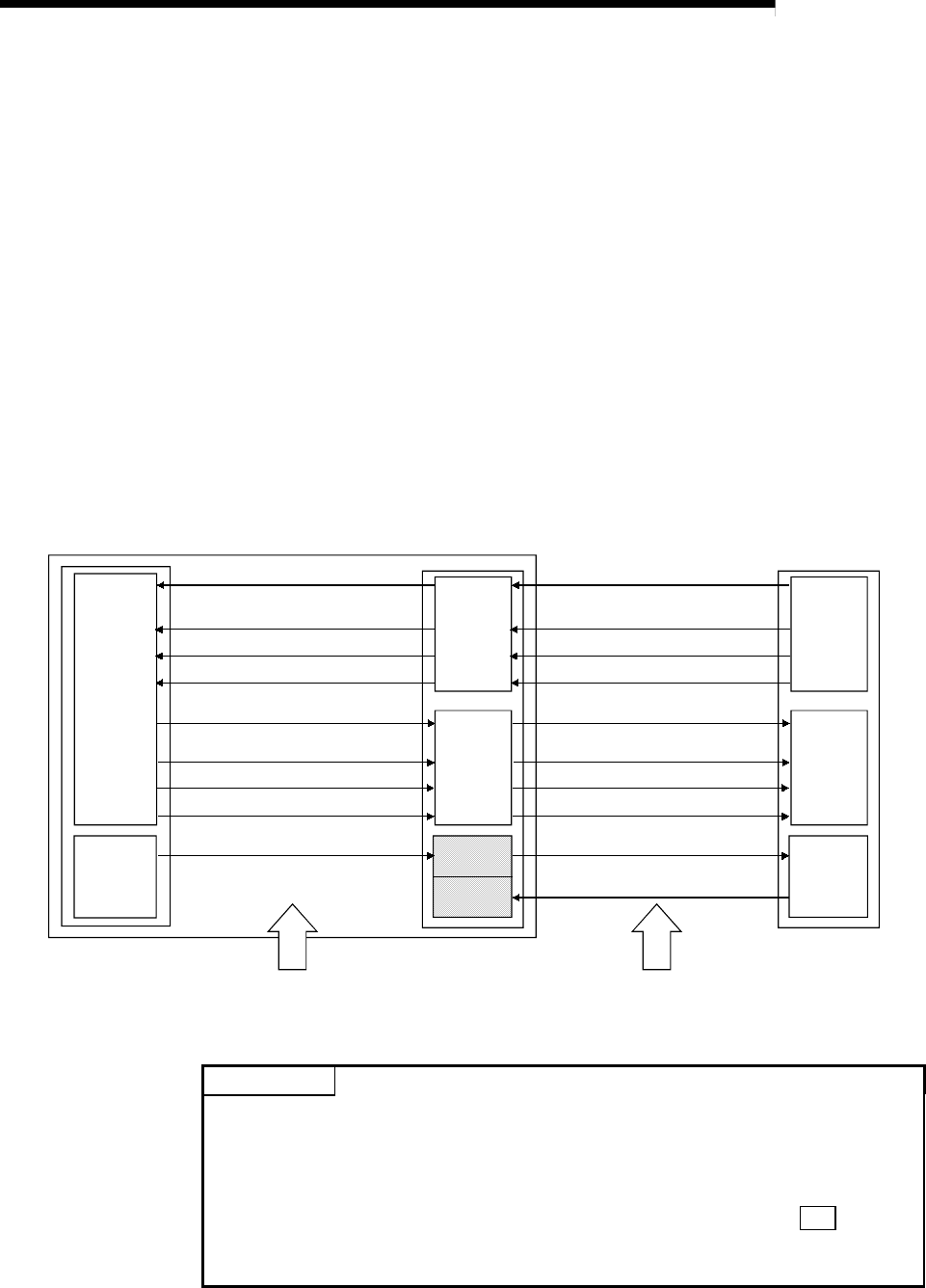
5 - 15
MELSEC-
A
5 PRELIMINARY INFORMATION
5.5.2 Using the transmission/reception buffer
Initialization using the transmission/reception buffer changes the contents of the R2
buffer memory using the transmission/reception buffer.
By using this operation, the transmission/reception area address and size, the range of
the buffer memory to be automatically updated, and the parameters, etc., can be
changed from the default values.
(1) Before initializing
1) Secure the transmission/reception buffer size by initializing the master
station.
Transmission buffer: Secure the transmission data size + seven words
Reception buffer: Secure the reception data size + seven words
2) Set the R2 mode setting switch to "0" (no automatic update function)
(2) Flow of process
Programmable controller CPU
Master station
R2
8) Initialization request ON
10) Initialization request OFF
1) Control data + initialization data
9) Initialization normal/error complete ON
11) Initialization normal/error complete OFF
3) Initialization data
4) Control data
Bit device
Word device
Remote
input (RX)
Remote
output (RY)
Remote
output (RY)
Remote
input (RX)
Buffer
memory
5) Intelligent device station access
complete ON
7) Intelligent device station access
complete OFF
2) Intelligent device station access
request ON
6) Intelligent device station access
request OFF
Transmission
buffer
Reception
buffer
Steps 1), 2), 6), 8) and 10) are carried out
with the sequence program.
Steps 3), 4), 5), 7), 9) and 11) are carried out by R2.
∗ When using the RIWT (RISEND) command,
the steps 2) to 7) are carried out automatically.
POINT
(1) Steps 1) to 7) are carried out for one write operation.
If writing is to be carried out multiple times because the addresses of the
buffer memories to be written are separated, etc., carry out the steps for each
write operation.
(2) Steps 8) to 11) (initialization) must be carried out when changing
R2
0H to
112
H.
Initialization is not required to change the other buffer memories.


















